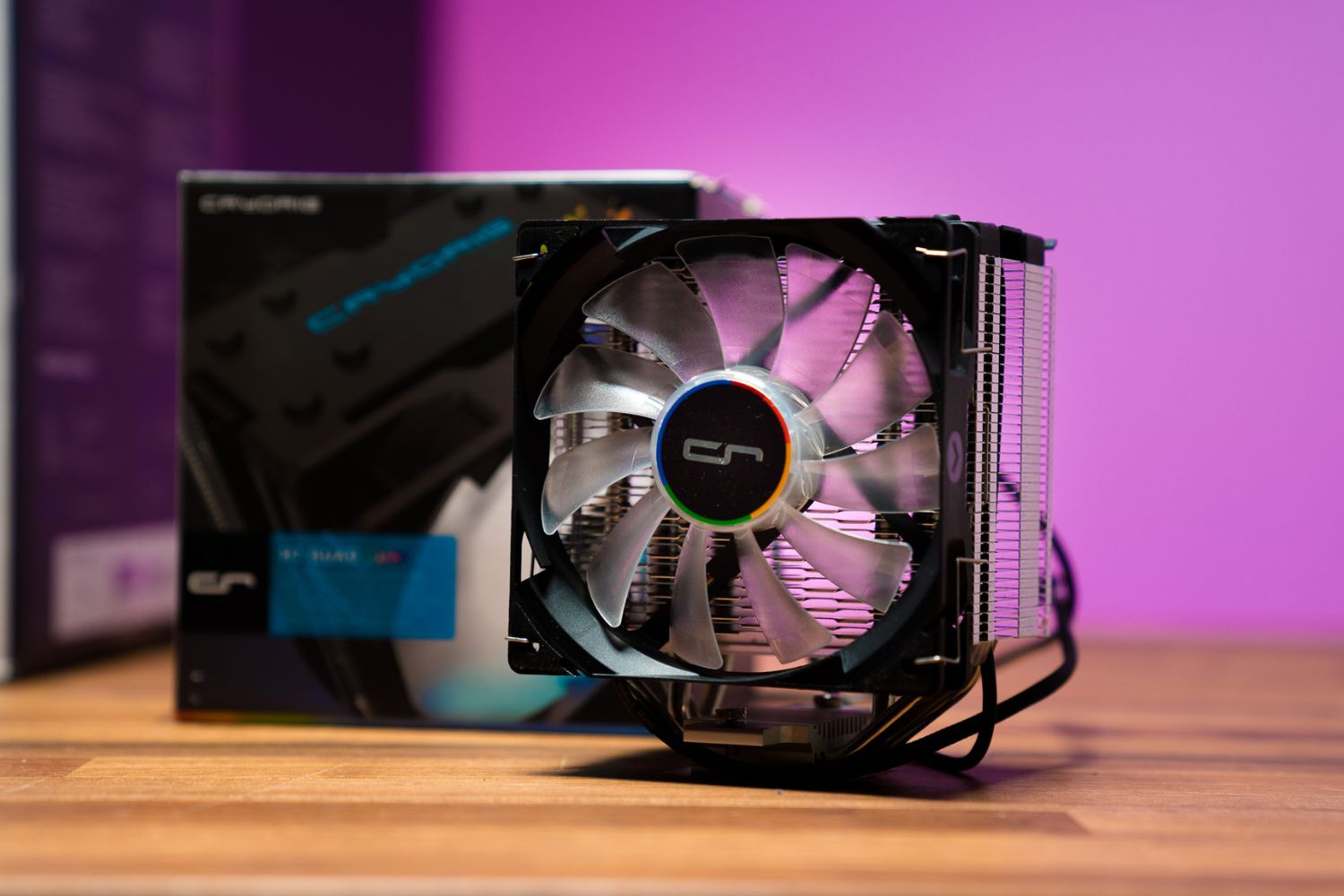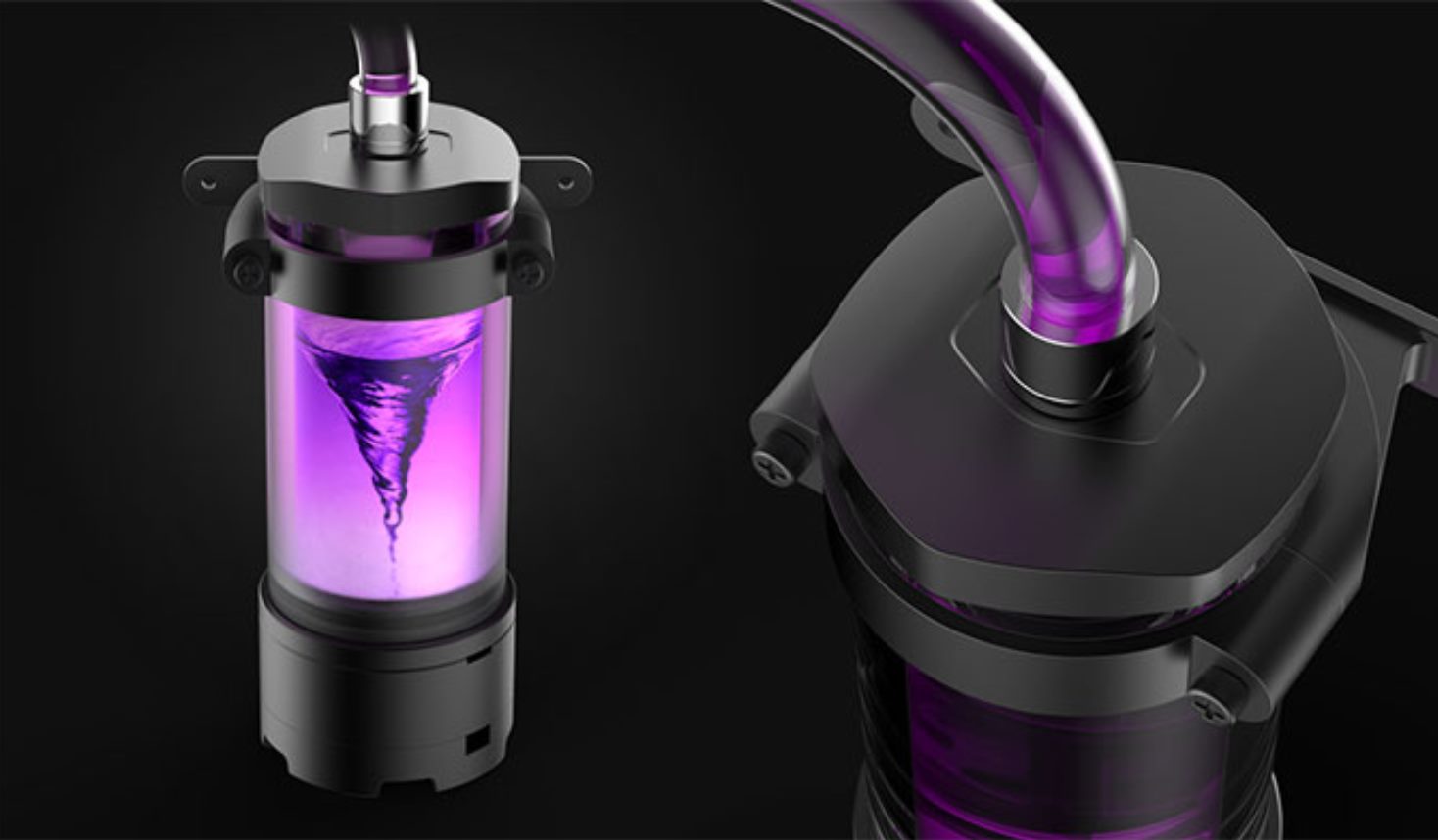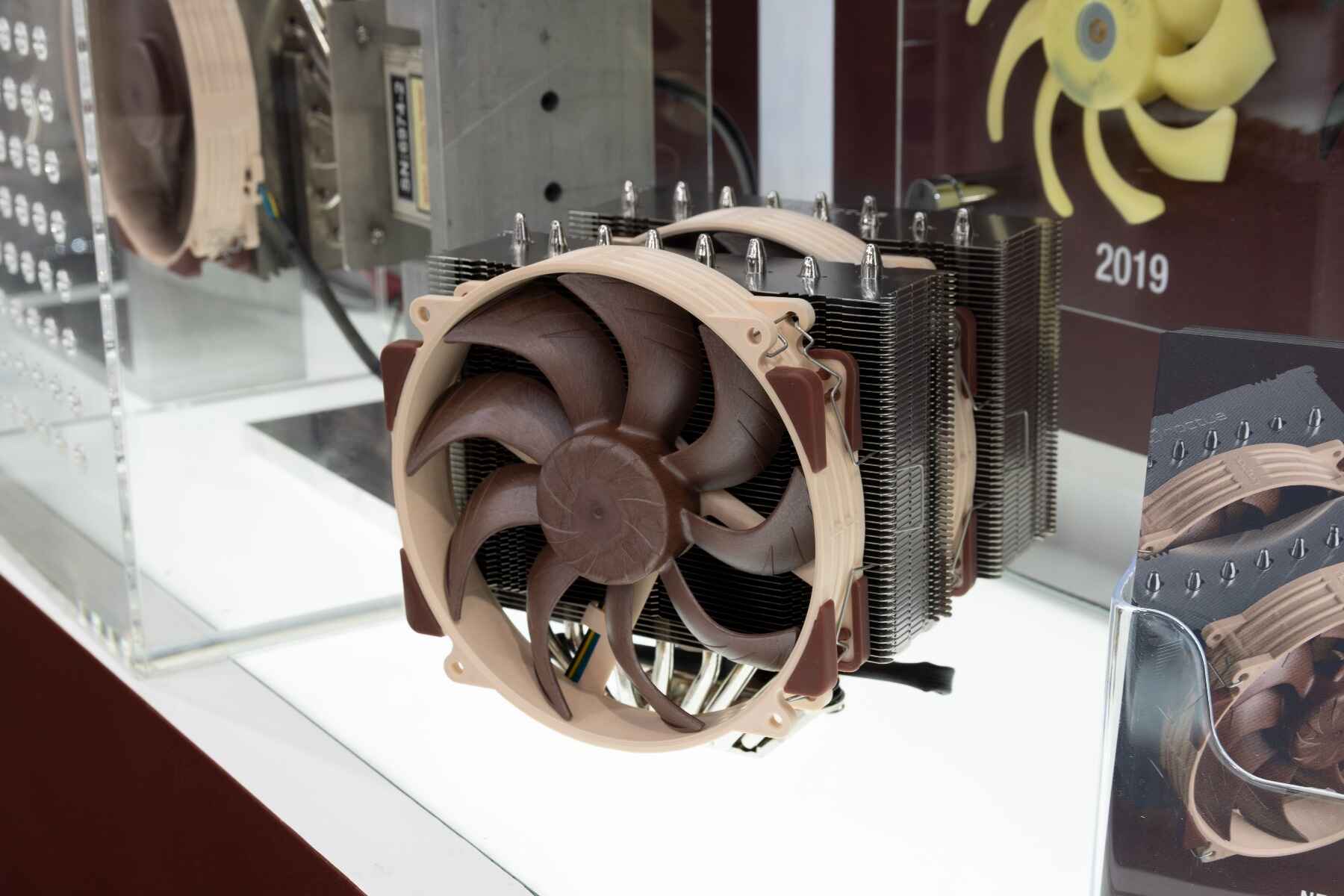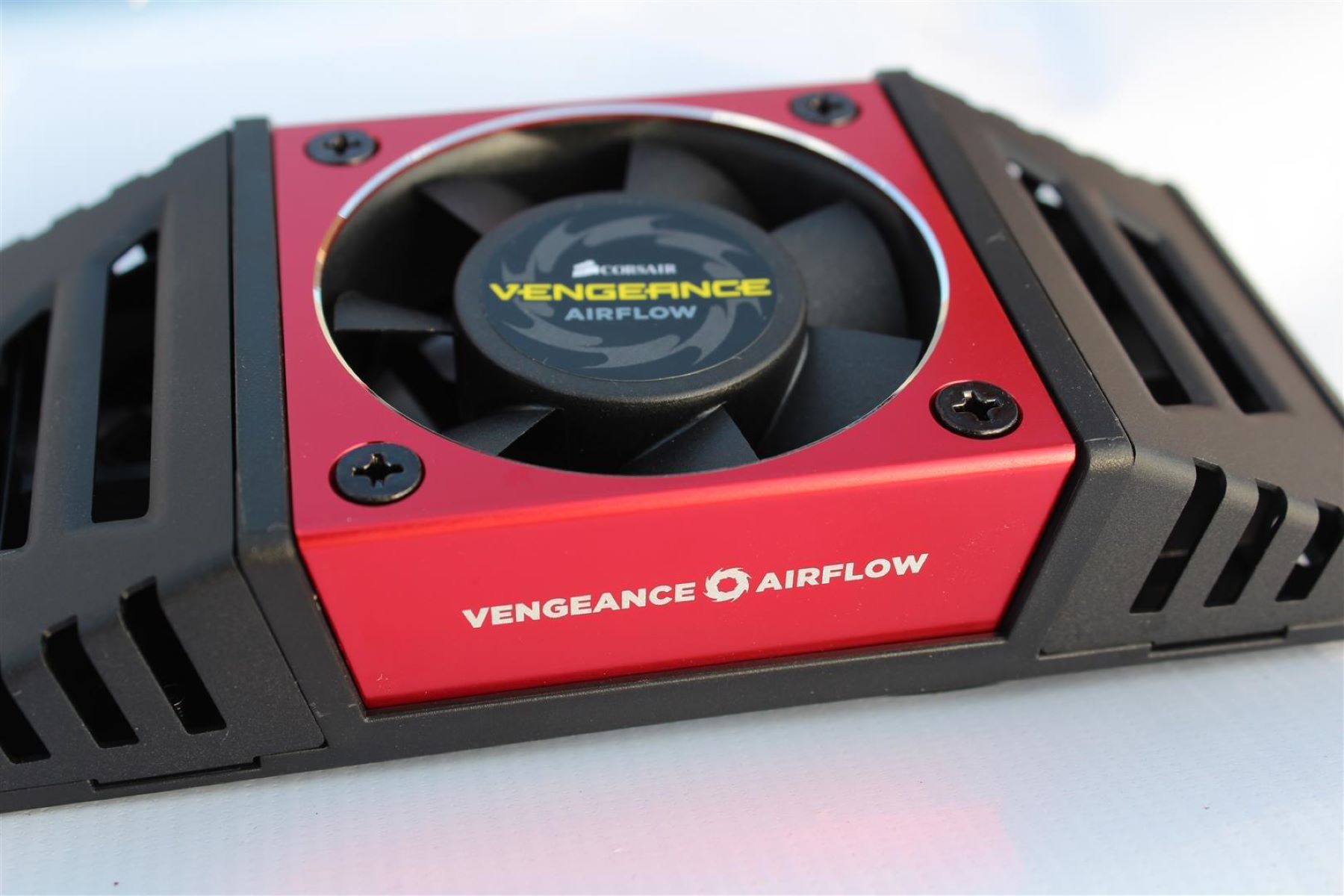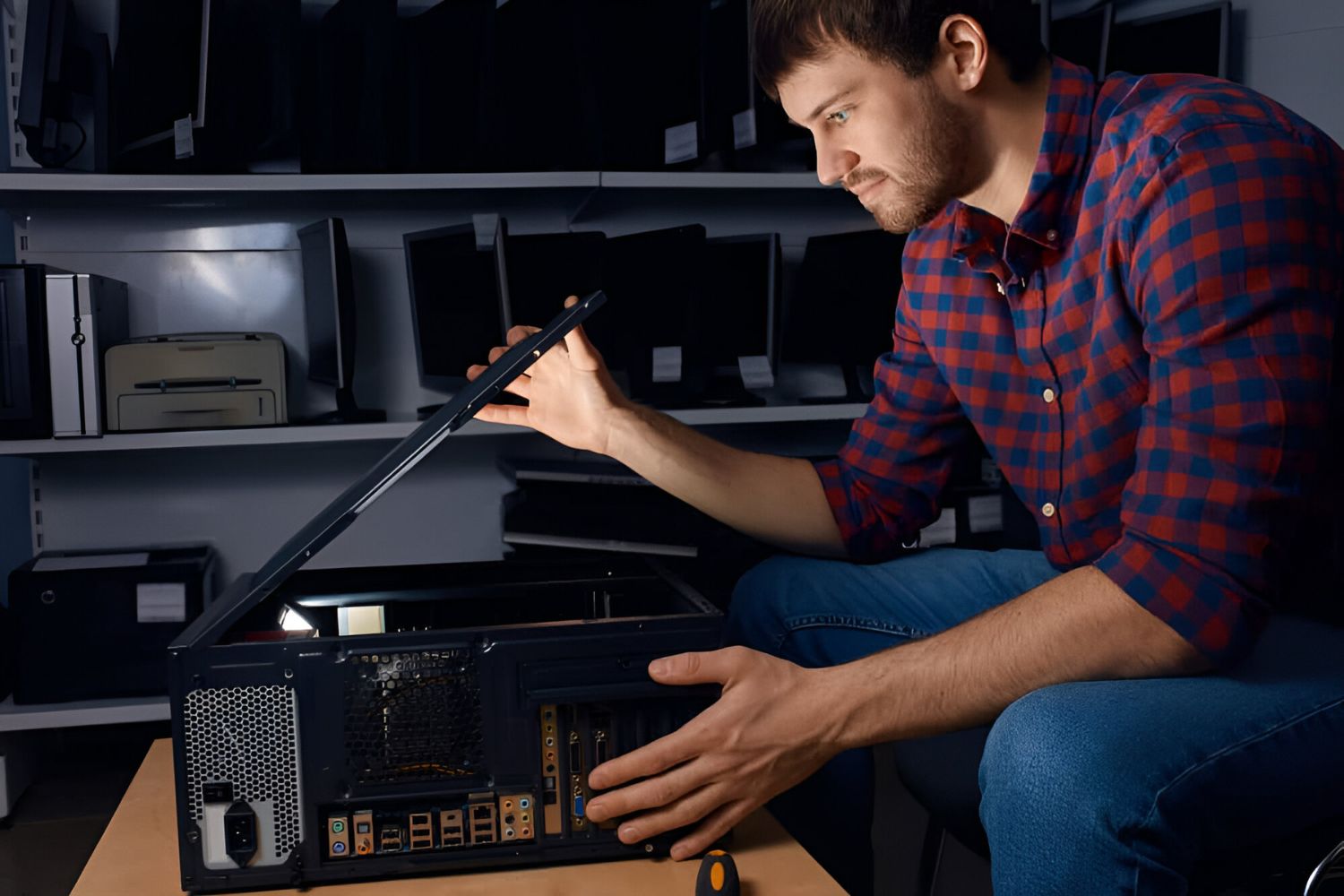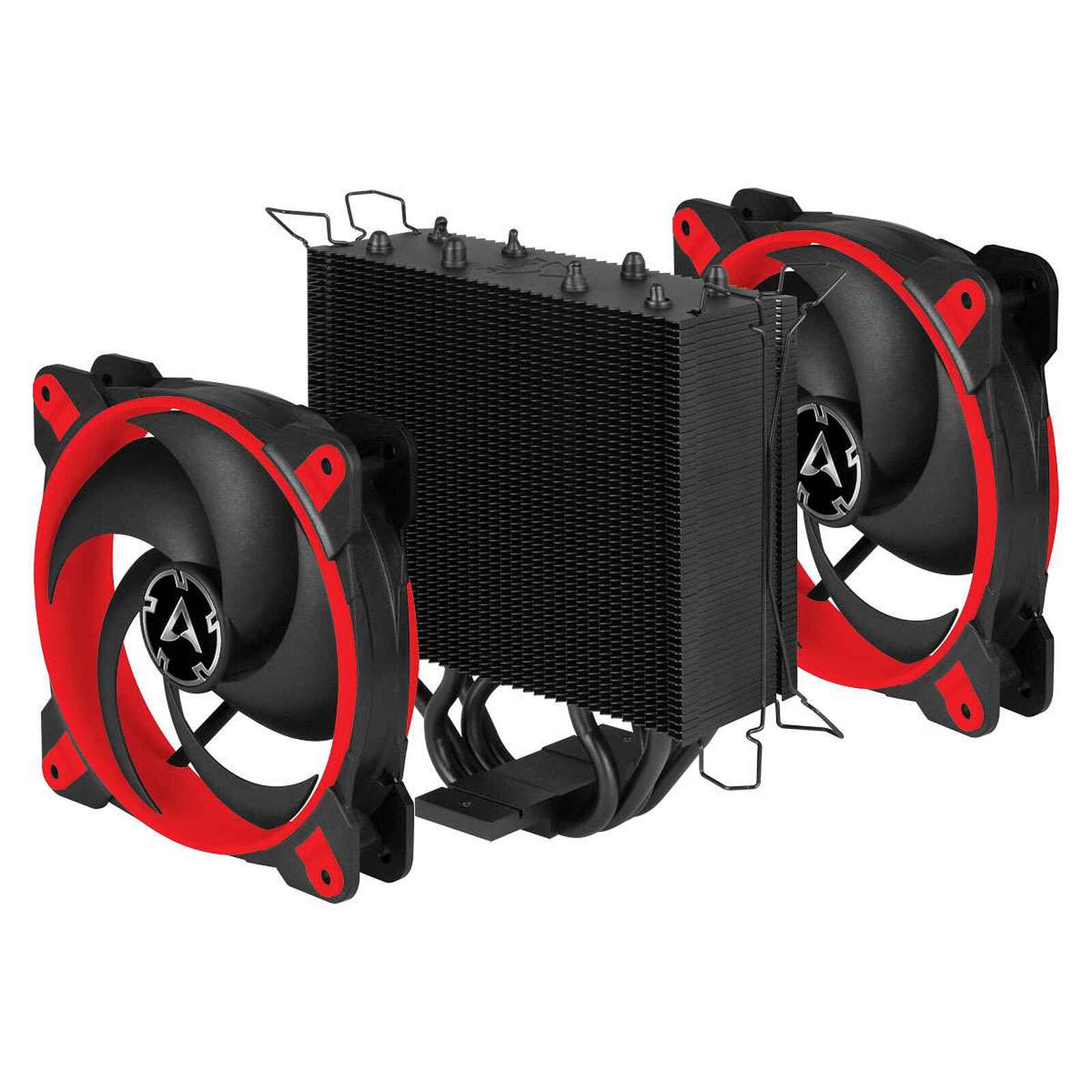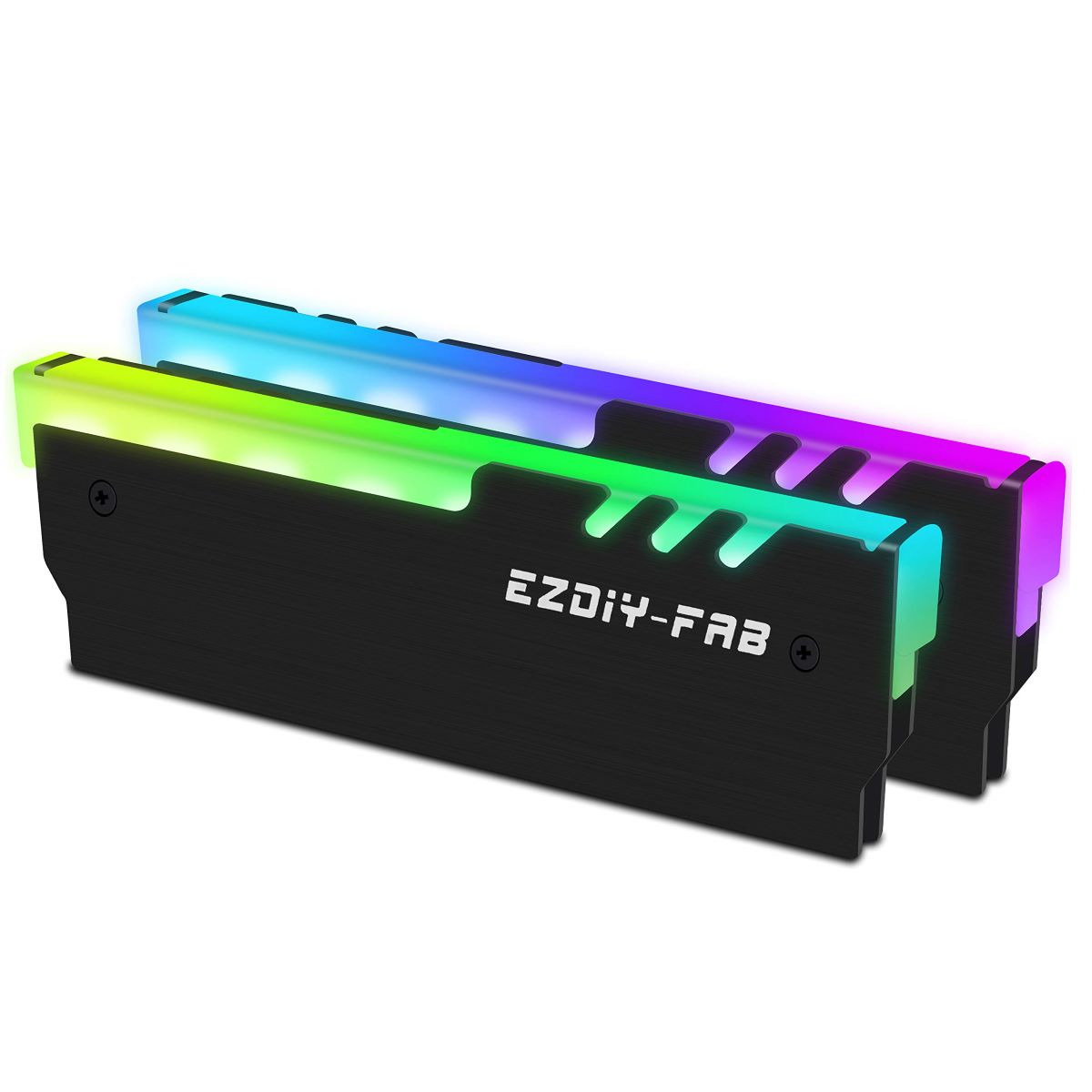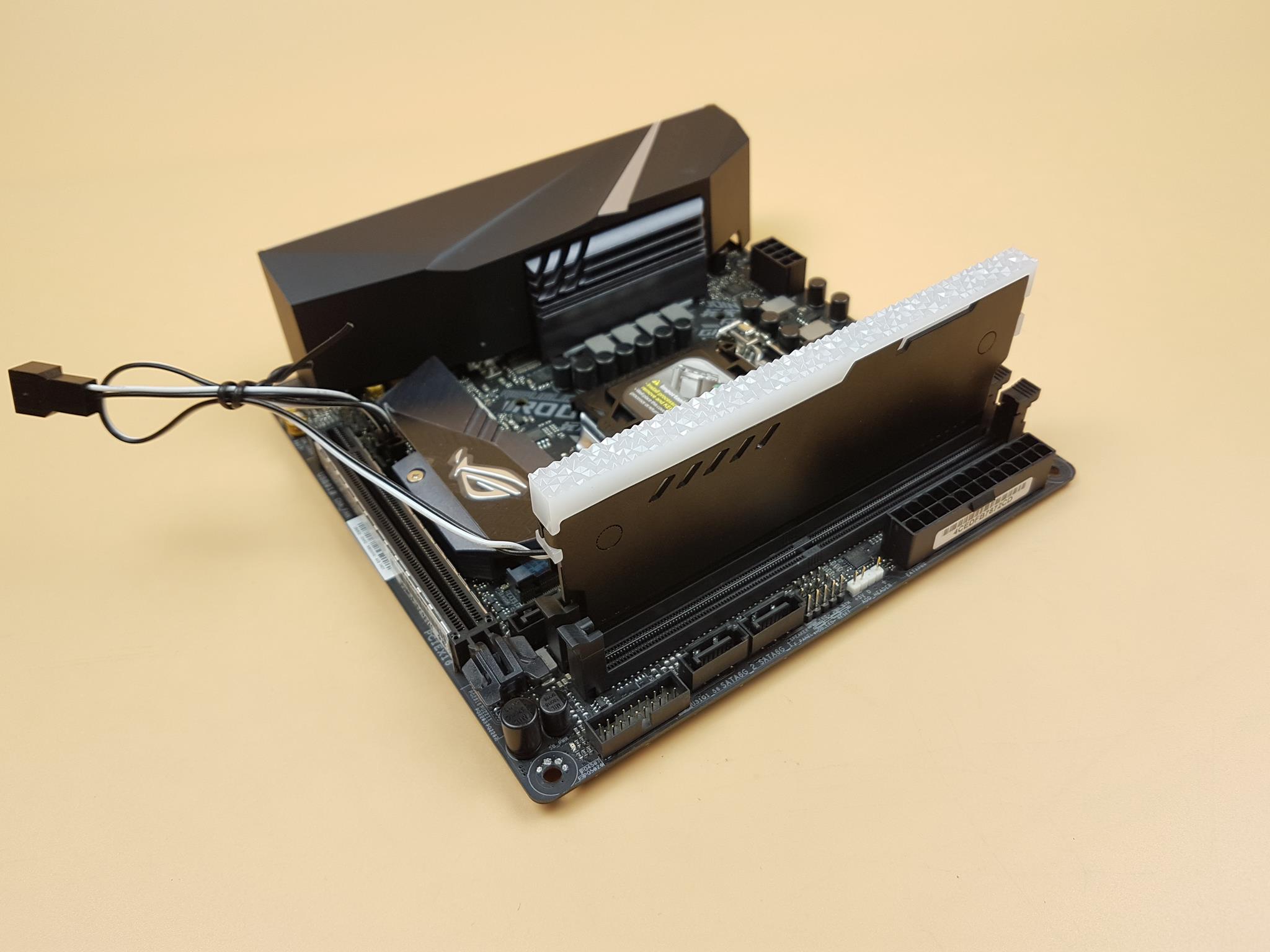Introduction
When it comes to keeping your CPU cool, choosing the right cooler is of utmost importance. A well-functioning CPU cooler not only helps maintain optimal temperatures, but also extends the lifespan of your processor and improves overall system performance. With a wide range of options available on the market, it can be overwhelming to decide which type of CPU cooler is best suited for your needs.
In this article, we will explore the different types of CPU coolers and help you determine which one is the right choice for you. We will discuss two main categories: air coolers and water coolers. Each category has its own advantages and considerations, so it’s essential to understand the differences between them.
Air coolers are the most common type of CPU coolers. They rely on a combination of heatsinks and fans to dissipate heat from the CPU. These coolers come in various forms, including stock coolers, tower coolers, and low-profile coolers. Stock coolers are the simplest and most basic option that often comes bundled with processors. Tower coolers are larger and offer better cooling performance, while low-profile coolers are designed for small form factor PCs where space is limited.
On the other hand, water coolers offer a more efficient cooling solution by using liquid to transfer heat away from the CPU. There are two main types of water coolers: all-in-one (AIO) coolers and custom loop coolers. AIO coolers come pre-filled and sealed, making them easier to install and maintain. They consist of a radiator, pump, and CPU block. Custom loop coolers, on the other hand, require more expertise and allow for greater customization. They are comprised of separate components that need to be assembled, including a reservoir, pump, radiator, tubing, and CPU block.
When deciding on the type of CPU cooler to purchase, there are several factors to consider. These include CPU socket compatibility, cooling performance, noise level, size and clearance, and budget. It’s important to find a balance between these factors based on your specific requirements and preferences.
Now that we have a general overview of CPU coolers, let’s dive deeper into each type and explore their features, pros, and cons, to help you make an informed decision.
Air Coolers
Air coolers are a popular choice for CPU cooling due to their simplicity, reliability, and affordability. They consist of a heatsink and one or more fans that dissipate heat away from the CPU. Let’s take a closer look at three main categories of air coolers: stock coolers, tower coolers, and low-profile coolers.
1. Stock Coolers: Stock coolers are the most basic type of air coolers and often come bundled with new processors. They are designed to provide adequate cooling for regular usage and moderate overclocking. While they may not offer the highest performance, they are a cost-effective solution for casual users and those on a tight budget. It’s worth noting that stock coolers are typically noisier compared to aftermarket air coolers.
2. Tower Coolers: Tower coolers are larger and use a combination of heat pipes, fins, and fans to provide superior cooling performance. They are designed to effectively dissipate heat and maintain lower CPU temperatures, making them a great choice for overclocking enthusiasts and users who engage in demanding tasks such as gaming and content creation. Tower coolers are available in various sizes and designs, with larger models offering better cooling performance but also occupying more space in your PC case.
3. Low-Profile Coolers: If you have a small form factor PC or limited space in your case, low-profile coolers are the way to go. These coolers are shorter in height and have a smaller footprint, allowing them to fit comfortably in compact builds. While their cooling performance may not match that of tower coolers, they still offer efficient heat dissipation for CPUs with lower power consumption. It’s important to choose a low-profile cooler that matches the specific height and clearance requirements of your case.
Air coolers have several advantages over other cooling options. They are generally more affordable, easier to install and maintain, and offer reliable performance. Additionally, they do not require any complicated plumbing or the risk of potential leaks. However, it’s important to consider the size, clearance, and compatibility with your PC case and CPU socket when selecting an air cooler.
In the next section, we will explore water coolers as an alternative option for CPU cooling, discussing their benefits and different types.
Stock Coolers
Stock coolers are the most basic type of air cooler that often come bundled with new processors. They are designed to provide sufficient cooling for regular usage and moderate overclocking. While they may not offer the highest performance, they are a cost-effective solution for casual users and those on a tight budget.
Stock coolers are typically designed and manufactured by the same company that produces the CPUs, such as Intel or AMD. They are specifically engineered to fit perfectly on the respective CPU socket, ensuring optimal heat transfer. This compatibility ensures that the stock coolers can be easily installed without the need for any additional components or modifications.
One of the main advantages of stock coolers is their affordability. Since they are bundled with CPUs, you don’t need to spend extra money on purchasing a separate cooler. This makes them an attractive option for budget-conscious users who are not engaging in heavy-duty tasks such as gaming or video editing.
However, it’s important to note that stock coolers may not offer the best cooling performance compared to aftermarket air coolers. They are usually made from lower-quality materials and have limited cooling capacity. As a result, they may struggle to maintain low temperatures under heavy loads or during overclocking. This can lead to increased CPU temperatures and potential performance throttling.
Another drawback of stock coolers is the noise they produce. Since they are designed to be simple and affordable, they often rely on smaller fans that need to spin at higher speeds to dissipate heat effectively. This can result in louder operation, which can be bothersome for users seeking a quiet computing experience.
Overall, stock coolers are a viable option for users who are not planning to push their CPUs to the limit or engage in demanding tasks. They provide sufficient cooling for everyday usage and moderate overclocking, all while being budget-friendly. However, if you have specific cooling requirements or are looking for improved performance and quieter operation, it may be worth considering aftermarket air coolers.
Tower Coolers
Tower coolers are a popular choice for users who prioritize excellent cooling performance and noise reduction. They utilize a combination of heat pipes, fins, and fans to effectively dissipate heat from the CPU. Tower coolers are specifically designed to maintain lower CPU temperatures, making them ideal for overclocking enthusiasts, gamers, and content creators.
One of the key advantages of tower coolers is their superior cooling capacity. The large surface area provided by the multiple heat pipes and fins enables efficient heat transfer, resulting in better cooling performance compared to stock coolers. This allows for lower CPU temperatures even under heavy loads or during overclocking, which can lead to improved system stability and performance.
In addition to their impressive cooling capabilities, tower coolers are also known for their quiet operation. They often feature larger fans that can spin at slower speeds while still delivering adequate airflow. This not only helps in reducing noise levels but also contributes to a more peaceful computing environment. Some tower coolers even come with advanced fan control features, allowing you to customize the fan speed and noise levels based on your preferences and performance requirements.
These coolers are available in various sizes and designs to accommodate different PC cases and clearance restrictions. Some tower coolers can be quite large, so it’s crucial to ensure that they can fit within your case and provide enough clearance for other components such as RAM modules and PCIe cards. The compatibility of the tower cooler with your CPU socket should also be considered to ensure a proper fit.
While tower coolers offer outstanding cooling performance, noise reduction, and compatibility, they do have a few downsides. Their larger size may pose challenges in certain smaller form factor PC cases where space is limited. Some tower coolers may also obstruct access to certain motherboard components, such as RAM slots or PCIe slots, making installation and maintenance more cumbersome.
Overall, tower coolers are an excellent choice for users who demand high-performance cooling and a quieter computing experience. They offer superior heat dissipation, improved system stability, and the flexibility to adjust fan speeds. However, ensure that you have sufficient space in your PC case and consider the potential clearance and installation issues that may arise.
Low-Profile Coolers
Low-profile coolers are a specialized type of air cooler designed for small form factor PC builds or systems with limited space. These coolers offer efficient heat dissipation while maintaining a compact footprint, making them an ideal choice for HTPCs (Home Theater PCs) or mini-ITX builds.
One of the main advantages of low-profile coolers is their compact size. They are shorter in height compared to traditional tower coolers, allowing them to fit comfortably in slim or shallow PC cases. This is especially important for small form factor builds where space is at a premium. Low-profile coolers ensure that the cooling solution does not interfere with other components, such as RAM modules or PCIe cards.
Despite their smaller size, low-profile coolers still provide adequate cooling performance for CPUs with lower power consumption or moderate overclocking. They often utilize heat pipes and fins in a horizontal or vertical configuration, combined with a low-profile fan, to efficiently dissipate the heat from the CPU. While they may not offer the same level of cooling performance as larger tower coolers, they are more than capable of keeping the CPU temperatures within a safe operating range.
Another benefit of low-profile coolers is their suitability for low-noise setups. Many low-profile coolers prioritize noise reduction by utilizing larger fans with lower RPM (Rotations Per Minute) and ensuring efficient airflow. This helps in maintaining a quieter computing environment, which is particularly important for HTPCs or office builds where noise levels need to be kept to a minimum.
However, there are a few limitations to consider when opting for a low-profile cooler. Due to their compact size, low-profile coolers may not provide the same level of cooling capacity as larger tower coolers. They may struggle to handle high-power CPUs or extreme overclocking scenarios. It is important to ensure that the chosen low-profile cooler is compatible with your CPU socket and can handle the specific thermal requirements of your processor.
Additionally, clearance should be considered when installing a low-profile cooler. RAM modules or other components located near the CPU socket can potentially obstruct the installation or interfere with the airflow of the cooler. Before making a purchase, check the compatibility and clearance specifications provided by the manufacturer to ensure a proper fit.
Overall, low-profile coolers are an excellent choice for users who desire efficient cooling in small form factor builds or systems with limited space. They offer a compact size, lower noise levels, and reliable cooling performance for CPUs with moderate thermal requirements. Just make sure to verify compatibility and clearance to ensure a seamless installation process.
Water Coolers
Water coolers, also known as liquid coolers, offer an alternative solution to CPU cooling compared to air coolers. These cooling systems utilize a liquid, usually a mixture of water and other additives, to transfer heat away from the CPU. Water coolers provide efficient cooling performance, lower noise levels, and the potential for customization. There are two main types of water coolers: all-in-one (AIO) coolers and custom loop coolers.
1. All-in-One (AIO) Coolers: AIO coolers are pre-assembled and sealed liquid cooling systems that come ready-to-install. They consist of a radiator, pump, and CPU block connected by tubes. AIO coolers are easy to install and require minimal maintenance, making them a popular choice among PC enthusiasts who desire the benefits of liquid cooling without the complexity of a custom loop. They offer superior cooling performance compared to most air coolers, making them suitable for overclocking and high-performance computing.
2. Custom Loop Coolers: Custom loop coolers are more advanced and provide the ultimate level of customization. These systems require separate components such as a reservoir, pump, radiator, tubing, water blocks, and fittings. Custom loop coolers offer precise control over cooling performance, allowing users to configure their cooling solution to fit their specific requirements. While custom loop coolers provide excellent cooling performance and aesthetics, they require more expertise to assemble and maintain. They are typically chosen by enthusiasts and overclockers who seek the highest level of cooling efficiency and customization.
Water coolers offer several advantages over air coolers. One major advantage is their superior cooling performance. The liquid used in these coolers has a higher heat capacity than air, allowing it to carry away heat more efficiently. This results in lower CPU temperatures even under heavy loads or overclocking. Water coolers also have the advantage of being quieter compared to air coolers. The absence or reduced use of fans in the CPU block enables a quieter computing experience, as noise is primarily produced by the radiator fans.
Customization is another key advantage of water coolers, especially in the case of custom loop coolers. Users have the freedom to select individual components based on their preferences, such as different tubing colors or transparent coolant. This customization allows for greater aesthetic appeal and the opportunity to showcase a unique cooling solution within the PC build.
However, it’s important to consider a few factors when opting for a water cooler. First and foremost, compatibility is crucial. Ensure the water cooler is compatible with your CPU socket to ensure a proper fit. Additionally, the installation process for custom loop coolers can be time-consuming and requires technical knowledge. It is essential to carefully follow the manufacturer’s instructions or seek professional assistance to set up and maintain custom loop coolers properly.
In summary, water coolers offer excellent cooling performance, lower noise levels, and customization options compared to air coolers. Whether you choose an AIO cooler for simplicity or a custom loop cooler for maximum customization, water cooling can provide an efficient and visually appealing solution for CPU cooling needs.
All-in-One (AIO) Coolers
All-in-One (AIO) coolers are a popular choice among PC enthusiasts seeking the benefits of liquid cooling without the complexities of a custom loop setup. These pre-assembled and sealed coolers offer efficient cooling performance and ease of installation, making them suitable for a wide range of users.
An AIO cooler consists of three main components: a radiator, a pump, and a CPU block. The radiator is responsible for dissipating heat and is equipped with one or more fans. These fans pull cool air through the radiator, removing heat from the liquid inside. The pump, usually located on the CPU block, circulates the liquid throughout the system, enabling efficient heat transfer from the CPU to the radiator.
One of the main advantages of AIO coolers is their ease of installation. They come pre-filled, eliminating the need for users to handle or refill the coolant. The majority of AIO coolers also utilize universal mounting mechanisms, ensuring compatibility with a wide range of CPU sockets. This makes the installation process straightforward and convenient, even for users with limited technical expertise.
AIO coolers offer excellent cooling performance, often surpassing that of air coolers. The liquid used in these coolers has a higher heat capacity compared to air, allowing it to dissipate heat more efficiently. This results in lower CPU temperatures, which can be beneficial for reducing the risk of thermal throttling, extending the lifespan of the CPU, and enabling higher overclocking potential.
In addition to their cooling capabilities, AIO coolers offer the advantage of a compact design. The CPU block and pump assembly are typically small and easily fit within most PC cases. This allows for more flexibility in terms of case selection and component compatibility.
Another benefit of AIO coolers is their relatively quiet operation. The pump and radiator fans are designed to operate at low noise levels, providing a quieter computing experience compared to some air coolers. This can be particularly appealing for users who prioritize a silent PC setup.
While AIO coolers offer numerous benefits, there are a few considerations to keep in mind. Firstly, the selection of an appropriate radiator size is crucial. Radiator sizes vary, and choosing one that is compatible with your case and provides adequate cooling capacity is important. Additionally, AIO coolers may have limited customization options compared to custom loop coolers. The aesthetic options are generally limited to the design and LED lighting of the CPU block and fans.
In summary, AIO coolers provide efficient cooling performance, ease of installation, and a compact design. They are an excellent choice for users who desire the benefits of liquid cooling without the complexities of a custom loop setup. Whether you are a beginner or an experienced PC enthusiast, AIO coolers deliver reliable cooling performance for a variety of system configurations.
Custom Loop Coolers
Custom loop coolers offer the ultimate level of customization and performance in liquid cooling solutions. Unlike all-in-one (AIO) coolers, custom loop coolers allow users to handpick individual components and tailor the cooling system to their specific needs and preferences. While they require more time, effort, and technical knowledge to set up and maintain, the benefits they offer can be well worth the investment for enthusiasts and overclockers.
Custom loop coolers consist of several major components, including a pump, reservoir, radiator, tubing, water blocks, and fittings. The pump is responsible for circulating the coolant through the system, while the reservoir stores the coolant and helps maintain a consistent supply. The radiator, equipped with fans, dissipates heat from the coolant, while the water blocks are designed to cool specific components such as the CPU and GPU.
One of the main advantages of custom loop coolers is their superior cooling performance. By carefully selecting high-performance components, users can achieve efficient heat dissipation and lower CPU temperatures, even under heavy loads and overclocking scenarios. Custom loop coolers provide excellent thermal headroom, which can be beneficial for maximizing CPU performance and stability.
Another major benefit of custom loop coolers is the flexibility and customization they offer. Users have the freedom to choose specific components, such as different water blocks or radiators, based on their preferences and requirements. This allows for fine-tuning of the cooling system to achieve optimal performance and aesthetics. Additionally, custom loop coolers offer the opportunity to use specialized coolants, fittings, and tubing, enabling users to create unique and visually appealing builds.
While custom loop coolers offer numerous benefits, they do come with some considerations. One significant factor to consider is the complexity of installation compared to AIO coolers. Custom loop coolers require precise planning, measurement, and assembly to ensure proper fit and maximum efficiency. It’s recommended to research and follow detailed instructions or seek professional assistance when setting up a custom loop cooler for the first time.
Another factor to keep in mind is maintenance. Custom loop coolers require regular maintenance, such as cleaning, refilling or replacing the coolant, and monitoring the system for any potential leaks or issues. This level of maintenance is essential for sustaining optimal performance and preventing hardware damage. Regular checks and maintenance are especially important if any modifications or additions are made to the loop over time.
Custom loop coolers offer the ultimate performance and customization for users who demand top-of-the-line cooling. They provide enhanced cooling capabilities, customizable aesthetics, and the potential for extensive overclocking. However, due to their complexity, custom loop coolers are best suited for experienced PC enthusiasts who are willing to invest time and effort into building and maintaining a high-performance liquid cooling system.
Factors to Consider
When choosing a CPU cooler, there are several important factors to consider. Each factor plays a crucial role in determining the overall performance and suitability of the cooler for your specific needs. Understanding these factors and how they align with your requirements will help you make an informed decision. Let’s explore the key factors to consider when selecting a CPU cooler:
1. CPU Socket Compatibility: Ensure that the cooler you choose is compatible with your CPU socket. Different CPUs have different socket types, such as Intel’s LGA or AMD’s AM4. Cross-checking the compatibility will ensure that the cooler fits securely and makes proper contact with the CPU.
2. Cooling Performance: Consider the cooling performance of the cooler. This includes factors such as the number of heat pipes, the size and design of the heatsink or radiator, and the efficiency of the fans or pump. Look for coolers that provide adequate cooling for your CPU’s thermal requirements, whether it’s for normal usage, overclocking, or heavy workloads like gaming or video editing.
3. Noise Level: The noise level of the cooler is another crucial factor, especially if you prefer a quieter computing experience. Check the specifications for fan or pump noise ratings, usually measured in decibels (dB). A lower noise level ensures a more peaceful environment during CPU-intensive tasks.
4. Size and Clearance: Consider the physical dimensions of the cooler and ensure it will fit within your PC case. Take into account any restrictions in height, width, or length that may arise due to your case or other components, such as RAM modules or PCIe cards. Pay attention to the measurements provided by the manufacturer to ensure proper clearance.
5. Budget: Determine your budget for a CPU cooler. Air coolers tend to be more affordable compared to water coolers, with AIO coolers falling in between. Set a realistic budget and explore options that provide the best combination of performance, features, and affordability within your range.
Remember that each factor is interconnected, so finding the right balance is essential. It’s crucial to assess your specific needs and priorities before making a decision. If you prioritize overclocking and performance, you may lean towards a high-performance air cooler or a custom loop water cooler. If budget and ease of installation are more important, an AIO cooler or a reliable air cooler may be the better choice.
By considering these factors and assessing your requirements, you can confidently select a CPU cooler that provides optimal cooling performance while staying within your budget and meeting your specific needs.
CPU Socket Compatibility
One of the critical factors to consider when choosing a CPU cooler is its compatibility with your CPU socket. Different processors have specific socket types, such as Intel’s LGA (Land Grid Array) or AMD’s AM4 (Advanced Micro Devices 4th Generation Socket). Ensuring that the cooler matches your CPU socket is essential for proper installation and optimal cooling performance.
CPU coolers are designed with specific mounting mechanisms that align with the corresponding CPU socket. The mounting hardware typically includes brackets or backplates that secure the cooler to the motherboard and provide the necessary pressure for efficient heat transfer. Mismatched socket compatibility can result in an inadequate fit, poor contact with the CPU, and compromised cooling performance.
Before purchasing a CPU cooler, you should research your CPU’s socket type and compare it with the compatibility specifications provided by the cooler manufacturer. This information is typically listed in the product details or on their website. Look for compatibility with your specific socket type, as well as any potential limitations or requirements for specific CPU models within that socket type.
It’s important to note that even within the same socket type, there may be variations or revisions that require specific compatibility considerations. For example, with Intel’s LGA 1151 socket, there are multiple revisions such as LGA 1151 v1, LGA 1151 v2, and LGA 1151 v3. Each revision may have slight differences in mounting hole placements or power delivery, which could impact cooler compatibility.
Additionally, as CPU socket designs evolve, older coolers may not be compatible with newer socket types. Therefore, it’s crucial to verify not only the compatibility of the cooler with your current CPU but also its potential compatibility with future upgrades.
Choosing a CPU cooler that is compatible with your CPU socket ensures a hassle-free installation process, avoiding the need for modifications or additional accessories. It also ensures proper thermal contact between the cooler’s base plate and the CPU heat spreader, maximizing heat transfer efficiency.
Before making a purchase, carefully read the product specifications to confirm that the CPU cooler explicitly lists compatibility with your CPU socket or its corresponding revisions. If you are uncertain or have any doubts, it’s advisable to consult the cooler manufacturer’s support or seek guidance from knowledgeable sources such as PC enthusiasts, forums, or professional technicians.
By considering CPU socket compatibility, you can confidently select a CPU cooler that fits your specific CPU socket and guarantees optimal cooling performance for your system.
Cooling Performance
When choosing a CPU cooler, one of the most crucial factors to consider is its cooling performance. The cooling performance of a CPU cooler determines how effectively it can dissipate heat from the processor, ensuring optimal operating temperatures and preventing thermal throttling.
The cooling performance of a CPU cooler is influenced by several key factors:
a) Heat Dissipation Design: The design of the CPU cooler plays a significant role in heat dissipation. Air coolers typically consist of a heatsink with heat pipes and fans. The number and placement of heat pipes, as well as the surface area and fin density of the heatsink, play a crucial role in heat transfer. Larger heatsinks with more heat pipes and denser fins generally offer better cooling performance.
b) Fan or Pump Efficiency: The efficiency of the fans or pumps used in a CPU cooler affects the airflow and heat transfer rate. For air coolers, fans with higher static pressure and airflow ratings help in effectively dissipating heat from the heatsink. With water coolers, the pump’s flow rate and the fans’ static pressure and airflow contribute to efficient liquid circulation and heat transfer from the CPU to the radiator.
c) Cooling Capacity: The cooling capacity of a CPU cooler should match the specific thermal requirements of your CPU. CPUs with higher TDP (Thermal Design Power) ratings or those used for demanding tasks such as gaming or video editing may require coolers with greater cooling capacity and higher heat dissipation capabilities.
d) Overclocking Capability: If you plan to overclock your CPU, pay attention to the cooling performance of the cooler. Overclocking generates more heat, so a cooler with excellent cooling performance is essential to maintain stable operation at higher frequencies. Look for coolers specifically designed for overclocking, as they are typically built to handle increased heat output.
When evaluating cooling performance, it’s important to consider real-world benchmarks and reviews from reliable sources. Look for information on the cooler’s performance under different workloads, temperatures achieved under various loads, and noise levels at different fan speeds. These benchmarks provide insights into how well the cooler performs in practical scenarios and help you make an informed decision.
It’s worth noting that cooling performance is often interconnected with other factors. For example, a cooler with superior cooling performance may generate more noise due to higher fan speeds. Finding the right balance between cooling performance, noise levels, and your specific requirements is essential.
Consider your usage scenarios and requirements when assessing cooling performance. If you primarily engage in demanding tasks like gaming or content creation, a cooler with robust cooling performance is recommended to maintain low temperatures and optimal CPU performance. For standard usage or lower-power CPUs, a cooler with moderate cooling performance may be sufficient.
Remember that cooling performance is not solely dependent on the CPU cooler. Factors such as case airflow, ambient temperature, and thermal paste application also influence overall cooling efficiency. Nevertheless, selecting a high-quality cooler with an appropriate cooling performance capacity is crucial for maintaining optimal CPU temperatures and ensuring system stability.
Noise Level
Noise level is an important consideration when selecting a CPU cooler, especially if you value a quieter computing experience. The noise generated by the cooler’s fans or pump can impact your overall comfort while using the computer, particularly during intensive tasks or when working in a noise-sensitive environment.
Fan noise is typically measured in decibels (dB) and indicated in the cooler’s specifications. The noise level can vary depending on the fan speed, size, design, and bearing type. Lower noise levels are generally preferred, but it’s important to find a balance between noise reduction and cooling performance.
Air coolers equipped with fans can produce noise due to their rotation speed, which directly affects the amount of air being pushed through the heatsink. Fans with higher rotational speeds tend to create more noise. However, many CPU coolers are designed with noise reduction features such as fan blades optimized for quiet operation or rubber dampeners to minimize vibrations.
Water coolers also contribute to system noise, primarily through the pump and radiator fans. While the pump noise is typically low and constant, radiator fans can generate noise when operating at higher speeds. Manufacturers often provide information on fan noise levels at different speeds to help users find the right balance between cooling performance and noise reduction.
When considering noise levels, it’s essential to weigh your preferences and usage scenarios. If you prioritize a quiet computing environment, look for coolers specifically designed for low noise operation. These coolers usually incorporate features like larger fans spinning at lower RPM (rotations per minute) or advanced fan control mechanisms that allow you to adjust the fan speed based on CPU temperatures.
It’s worth noting that reducing noise may require some compromise in cooling performance. Slower fan speeds or larger heatsinks may result in slightly higher CPU temperatures. However, modern CPU coolers are designed to strike a balance between effective cooling and noise reduction, offering a quiet environment without compromising excessive heat dissipation.
When researching CPU coolers, reviews and benchmarks can provide valuable information on noise levels. Look for detailed evaluations of noise performance under different load conditions or comparisons between various cooler models. These insights will aid in making an educated decision based on real-world scenarios.
If noise reduction is of utmost importance to you, consider the additional investment in high-quality, low-noise fans or aftermarket cooling solutions. Upgrading the fans included with the cooler can significantly reduce noise levels without compromising on cooling performance.
Remember that noise level preference differs from person to person. What constitutes an acceptable noise level for one individual may be considered too loud for another. Evaluating your own tolerance for noise will help guide your selection process and ensure a more enjoyable and customized computing experience.
Size and Clearance
Consideration of the size and clearance requirements is crucial when choosing a CPU cooler as it impacts compatibility with your PC case and other components. Ensuring that the cooler fits properly within your system is essential for both functionality and aesthetics.
CPU coolers come in various sizes and designs, and it’s important to make sure the dimensions are compatible with your PC case. The size of a CPU cooler is primarily determined by its height, width, and depth, although the focus is often on its height due to space restrictions imposed by PC cases.
Before selecting a CPU cooler, consult your PC case’s specifications or manual to determine the maximum allowed cooler height. It’s recommended to leave some clearance between the CPU cooler and the side panel of the case to allow for proper airflow. Also, consider the position of other components, such as RAM modules or PCIe slots, to ensure they don’t obstruct the installation or interfere with the cooler’s operation.
Low-profile coolers are specifically designed for cases with limited space or small form factor builds. These coolers have a reduced height compared to standard air coolers, allowing for a more compact footprint. They are an excellent choice if space is a concern, but it’s important to ensure their compatibility with the case and other components.
Additionally, the compatibility of the cooler with your motherboard’s RAM slots is essential. Some CPU coolers, especially those with a large heatsink or bulky design, can interfere with taller RAM modules or those with heatspreaders. Ensure that the cooler allows sufficient space for the installation and removal of RAM modules without any obstructions.
Remember to check the CPU cooler’s compatibility with your motherboard’s socket as well. Ensure that the CPU cooler’s mounting mechanism aligns with the mounting holes around the socket area. Also, check for any potential obstructions caused by VRM heatsinks or other motherboard components that could interfere with the cooler’s installation or operation.
When considering size and clearance, it’s important to strike a balance between the cooling performance and the available space in your PC case. While a larger cooler may offer better cooling performance, it might not fit within a compact case. On the other hand, a smaller cooler may sacrifice some cooling potential but fits comfortably in a smaller chassis.
Measuring the available space in your PC case, understanding the clearance requirements, and cross-referencing them with the specifications and dimensions of potential coolers will help you make an appropriate selection. It ensures that the CPU cooler not only fits within the case but also provides sufficient clearance for other necessary components, ensuring a well-functioning and visually appealing system.
Budget
Considering your budget is an important factor when selecting a CPU cooler. CPU coolers are available at various price points, and determining your budget beforehand will help narrow down your options and ensure that you choose a cooler that provides the best value for your money.
Air coolers are generally more cost-effective compared to water coolers. They offer a reliable and efficient cooling solution at a lower price point. Air coolers come in a range of prices, from budget-friendly options to high-performance models with premium features. Evaluating your cooling needs and budget will help you strike a balance between cooling performance and affordability.
Water coolers, specifically all-in-one (AIO) coolers, are typically priced higher than air coolers. The cost is associated with the additional components, such as the pump and radiator, as well as the complexity involved in their design and manufacturing. Custom loop water coolers, on the other hand, can vary widely in price depending on the specific components chosen, customization options, and branding.
It’s important to consider your specific requirements and allocate a realistic budget for a CPU cooler. Assess your cooling needs based on factors such as your CPU’s thermal requirements, whether you plan on overclocking, and the intensity of your usage scenarios (e.g., gaming, video editing, or general office work).
While a higher-priced cooler may offer better cooling performance or additional features, it’s essential to evaluate whether those features align with your needs. For instance, if you are not planning on overclocking, opting for a mid-range air cooler that provides adequate cooling performance within your budget might be a more sensible choice.
When setting your budget, it’s also a good idea to take into account the longevity of the cooler. A high-quality cooler may offer better durability, longer warranty periods, and potential compatibility with future CPU upgrades. Investing a bit more upfront for a reliable and long-lasting cooler can often be a wise decision in the long run.
Research and comparison shopping are crucial when budgeting for a CPU cooler. Read reviews, check benchmarks, and compare prices from different manufacturers to find the best value for your budget. Remember to consider factors such as warranty coverage, customer support, and overall build quality in addition to the cooling performance and price.
Ultimately, finding the right balance between your budget and cooling needs is key. By exploring the available options and considering your specific requirements, you can choose a CPU cooler that offers optimal cooling performance within your desired price range.
Conclusion
Choosing the right CPU cooler is crucial for maintaining optimal temperatures, prolonging the lifespan of your processor, and improving overall system performance. Both air coolers and water coolers offer distinct advantages depending on your specific needs and preferences.
Air coolers, such as stock coolers, tower coolers, and low-profile coolers, provide effective and affordable cooling solutions. They come in various sizes and designs, offering a wide range of options for different PC cases and requirements. Air coolers are ideal for users who prioritize simplicity, reliability, and cost-effectiveness.
Water coolers, which include all-in-one (AIO) coolers and custom loop coolers, offer superior cooling performance and the potential for customization. AIO coolers are pre-assembled, easy to install, and provide excellent cooling efficiency. On the other hand, custom loop coolers offer the ultimate level of customization, allowing for precise control over cooling performance and aesthetic design.
Factors such as CPU socket compatibility, cooling performance, noise level, size and clearance, and budget should all be considered when selecting a CPU cooler. Ensuring compatibility, evaluating cooling performance for your specific needs, managing noise levels, checking size and clearance requirements, and budgeting appropriately will help you make an informed decision.
Remember that finding the right balance is key. Consider your cooling requirements, case limitations, personal preferences, and budget constraints to select a CPU cooler that caters to your specific needs.
Whether you opt for an air cooler or a water cooler, a well-chosen CPU cooler will help maintain optimal CPU temperatures, improve system performance, and enhance your overall computing experience. Take the time to research, compare options, and consider the factors discussed in this article to make a choice that aligns with your requirements.
With the right CPU cooler in place, you can enjoy a cool and efficient system, whether you’re engaging in demanding tasks or simply browsing the web. Happy cooling!







